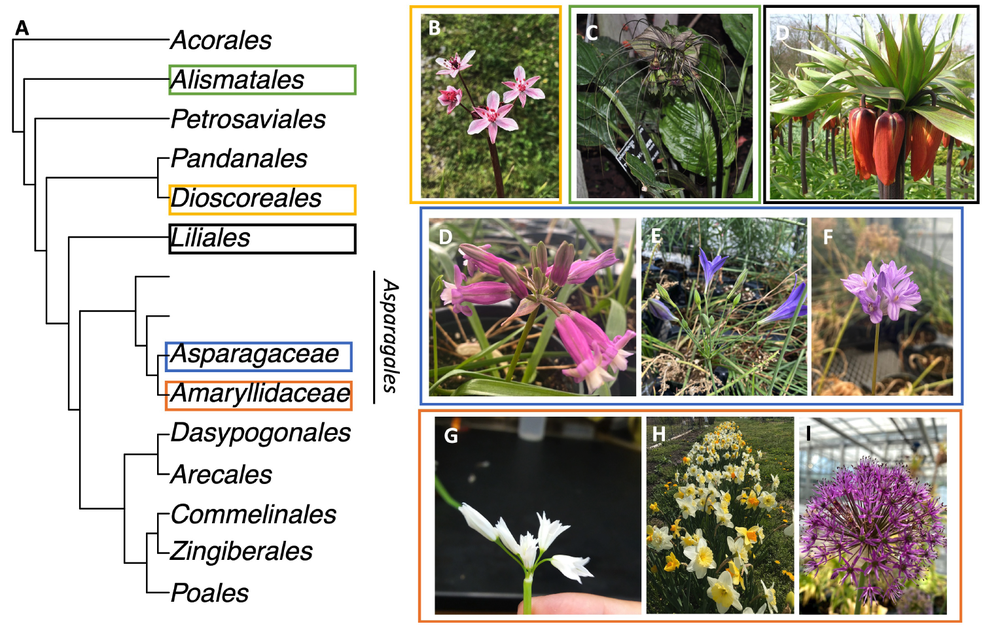
Various umbellate inflorescences
Authors
Martínez-Gómez J, TAM Atluri, IJ Rose, AJ Holliday, CF Strock, JP Lynch, WB Miller, DW Stevenson, CD Specht
Source
Frontiers in Plant Science
Download Options
DOI: 10.3389/fpls.2022.873505
Abstract
Inflorescence structure is very diverse and homoplasious, yet the developmental basis of their homoplasy is poorly understood. To gain an understanding of the degree of homology that these diverse structures share, we characterize the developmental morphology and anatomy of various umbellate inflorescences across the monocots. We characterized the developmental morphology of multiple inflorescences using Sattler’s (1968) method of epi-illumination. We, additionally, used Laser Ablation Tomography, a novel high-throughput method to visualize plant anatomy in order to reconstruct three-dimensional vasculature of the inflorescence axis to assess branching order. We used these approaches to analyze the developmental morphology of umbellate inflorescences in five instances of presumed homoplasy: in three members of the Amaryllidaceae; in three members of the Asparagaceae, including a putatively derived raceme in Dichelostemma congestum; in Butomus umbellatus (Alismataceae), Taccachantrieri (Dioscoreaceae), and umbellate structure in Fritillaria imperialis (Liliaceae). We compare these with racemes found in three members of the subfamily Scilliioideae in Asparagaceae. We find there are three convergent developmental programs that generate umbellate inflorescences in the monocots, bostryx-derived, cinninus-derived and raceme-derived. Additionally, among the bostryx-derived umbellate inflorescence, there are three instances of parallel evolution found in the Amaryllidaceae, in two members of Brodiaeoideae (Asparagaceae), and Butomus umbellatus, all of which comprise a similar condensed bostryx. We discuss the morphological modifications necessary to generate such complex and condensed structures and describe a new variant of metatopy, termed horizontal concaulesence. We contextualize our findings within the broader literature of monocot inflorescence development, with a focus on synthesizing descriptive developmental morphological studies.

